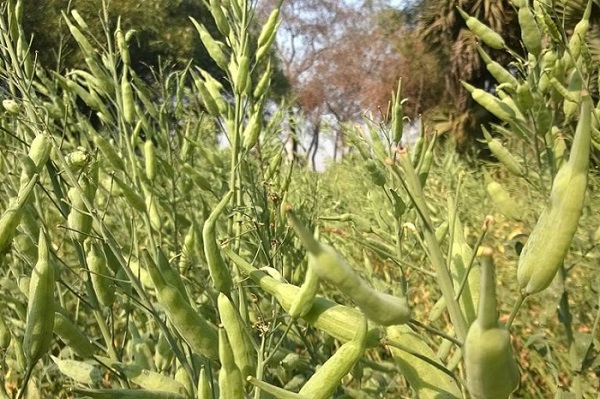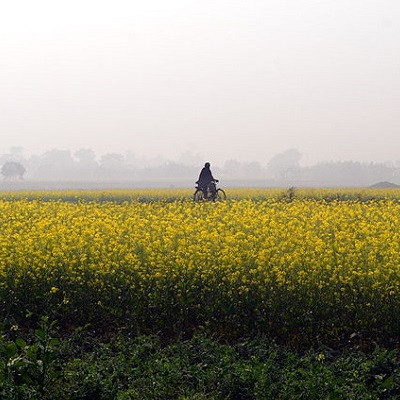Nanotechnology has been supporting the Indian agricultural market to develop products and processes with higher efficiency and lower costs. With the increasing scope to commercialise this technology, the government has now proposed a set of guidelines to regulate and maintain quality and safety of the products and processes.
These regulations will oversee the use and spread of hundreds of nano-agri input products (NAIP) and nano-agriproducts (NAP) which have been circulating in the Indian market for some years now, to prevent nanoparticle toxicity in humans and the environment.
NAIPs and NAPs are products in a submicroscopic form used in agriculture and allied sectors for achieving varied goals like pest and disease prevention, nutrition, growth regulation, efficient packaging and storage among others.
The department of biotechnology (DBT), which comes under the Union Ministry of Science and Technology led by Harsh Vardhan, unveiled the draft ‘guidelines for evaluation of nano-agri input and nano-agriproducts’ on August 1, 2019 and has asked all stakeholders like different government agencies, institutions, industry, researchers and others to give their comments and suggestions by the end of August 2019.
While the DBT’s guidelines aim at increased quality and efficacy for commercialisation of nanotechnology-based innovations, they also focus on safety of the products. “The unique properties can also lead to nanoparticle-related toxicity in humans and the environment. The guidelines for evaluation of nanoproducts in agriculture and food are more challenging than the existing procedures for assessment of fertilisers or safety evaluation of pesticides or toxicity evaluation in food,” the guidelines said.
At present, there are no unanimously acceptable international guidelines for nano-agriproducts. There exist a few provisions for nanomaterials, which are considered globally, from organisations like the World Health Organisation (WHO) with specific guidelines for quality and safety.
But new innovations make it difficult to apply a universal set of evaluation parameters for different nanoproducts with different applications and thus many a time the case-by-case basis evaluation approach is advocated for NAPs, the proposed guidelines said.
Government’s push for nano-biotechnology since 2007
Nano-biotechnology has been an important area for the government of India which had launched a National Nano Mission in 2007 that looks at the uses of nanotechnology for safe drinking water, materials development, sensors development, drug delivery, etc. While the central government’s Department of Science and Technology (DST) is the nodal agency for implementing the nano mission, the Department of Biotechnology’s (DBT) role is to promote its applications in various sectors of life sciences. The DBT has been funding research and development in the sector since 2007.
The biotechnology department is also mandated to define guidelines to help in regulatory processes pertaining to development and commercialisation of nano products in India. Recently, the DBT had finalised the guidelines for evaluation of nano-pharmaceuticals.
Over the years, scientists and other stakeholders, have been pushing for guidelines to evaluate products in biological sciences developed through interventions of nanotechnology. According to the DBT, NAIPs and NAPs are emerging to achieve ‘minimal usage with maximum effect’ in agricultural and food applications.
“New considerations of application of nanotechnology in agriculture thus necessitates the initiation of scientific decision-making and informing platform for a cooperative national module that dedicatedly works on the policy aspects of these products before commercialisation. Thus, DBT has formulated draft guidelines for evaluation of nano-agri input and nano-agriproducts in India after a series of consultations with the stakeholders,” emphasised the department of biotechnology in its draft guidelines.
It explained that these guidelines are aimed to ensure the quality, safety and efficacy as well as encourage the commercialisation of nanotechnology-based innovations in agriculture and food/feed with high benefit and low-risk ratio when compared with their bulk counterparts.

Hundreds of agriproducts using nanotechnology are already in Indian market without any regulation.
“Nanoparticles acquire unique properties due to their small size to large surface area ratio. It thus supports in the development of novel products and processes as well as enhances the performance of existing ones across several disciplines,” said the proposed guidelines while explaining the rationale behind the use of nanoparticles in multiple applications.
Nanotechnology to reduce losses, increase benefits of crops
In November 2017, The Energy and Resources Institute (TERI) had come out with zero draft on regulation of nano-products in agriculture sector, stating that nanotechnology has the potential to revolutionise the global food production system.
For instance, it noted that controlled use of nano-fertilisers can significantly increase the nutrient use efficiency and provide stress tolerating ability to crops as well as reduce environmental pollution by reducing fertiliser nutrient run-off into ground and surface water.
The TERI report had emphasised that the use of nanotechnology in agriculture aims to reduce nutrient losses and the amount of agrochemicals used, by ensuring smart delivery of active compounds and increased productivity through optimised water and nutrient management.
Meanwhile, the DBT’s draft guidelines also explained that nanotechnology has recently been introduced for the improvement of agricultural systems through higher crop yield and better crop protection in order to meet the changing needs and domains of providing food to the growing population of the world.
The draft also emphasised that innovative nano-intervention in the agriculture and food sector could generate “low-cost, high-efficacy solutions in terms of products and processes, especially suitable for developing countries.”
The document also highlighted that the guidelines would aim towards interdepartmental and interministerial cooperation given that nanotechnology and nanoproducts are currently dealt by different ministries and departments within the Indian government.
“The much-needed policy will pave the way to foster innovation and translational research and industries will be able to develop commercial-scale technologies in the sector of agri-nanotechnology and food technology. India is ahead of many developed and developing countries in this regard,” Alok Adholeya, programme director sustainable agriculture at TERI, told Mongabay India.
However, there are concerns as well. Studies caution that although there has been a steady rise in the use of nanoparticles in agriculture sector it must be kept in mind the fate and behavior of nanoparticles in the environment, their interaction with crop plants, microbes, and persons, their subsequent movement through the food chain and ultimate effects on animal and human consumers should be evaluated in-depth to ensure safe and sustainable use of NPs in near future.
The guidelines once finalised would broadly cover NAIPs and NAPs.
NAIPs include products, like nano fertilisers and nanopesticides, that are intended to be used in agriculture and allied sectors for crop production, protection, management, harvesting, post-harvesting and packaging. “The applications include and may not be restricted to pest and disease prevention, control and management, fertilisers, agrochemical delivery, plant nutrients, anti-transpiration agents, plant growth regulators and biostimulants for crop benefits,” said the guidelines.
NAPs, like nano-food and nano-feeds, cover “agriproducts in the nano form of finished food formulation, finished feed formulations, nano processing aids, nanocomposites for food packaging and nano-sensors for food packaging and food safety applications.”
Read the original article on Mongabay-India.
